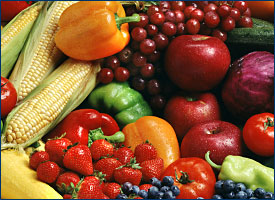Ecological Diversity at Risk
The Animal Rights Conscience — Part 1
Ecological Diversity at Risk: Flora and Fauna
For all of our intense deliberations concerning the future of ourselves and all the other life forms co-habiting this fragile planet with us, not one person can adequately predict even a few seconds into the future. The lessons of the past have faded, as the philosopher Heidegger warned regarding our failure to examine with sufficient care the mistakes of our ancestors; of those twenty-two civilizations which, as described by the great historian Arnold Toynbee, went extinct as a result of ecological overshoot — the outstripping of available resources. The ancestor worshipping residents of Easter Island in former times has long been the perfect case study in cultural self-annihilation through the simply agency of destroying every last tree on one’s exceedingly finite island. If there is an unambiguous lesson to be learned, it is this: either live within the limits of an ecosystem, or perish. Example upon example has shown this to be a fundamental maxim of biological success or failure.
 We are a young species, possibly the youngest large mammalian collective in recent biological annals. Parrots and their ancestors have been around for well over 100 million years and can wield verb tenses and deep linguistic structure that far exceeds our clumsy efforts at communication, notwithstanding the fact English, for example, has well over 1.3 million words from which to pick and choose. Yet, some years ago, two independent studies revealed that the average American uses as few as fifty words on any given day. Similarly, the food we eat has been so homogenized as to render the teeming organic pharmacopeia that once graced most continents today largely sterile, monopolistic, and shorn of its biodiversity. Rare breed societies have pointed out that our apples, pears, peaches and bananas have been genetically altered, their constant hybridization a lump sum of denuded biomass consistent with our rage for efficiency. Taste, color and quality of our food, first stripped from its original sources and soils, has been refurbished with addulterants which — if one reads the labels — are astonishing for their complex chemical chicanery, mostly to ill-effect. In the same vane, developed countries have systematically sought out methods for maximizing profits at the expense of ecological insurance, diverse phenotypes, such that a single corn blight could easily wipe out a nation’s primary staple in a single season. Commerce and ecological diversity are at odds, when it should be the other way around. And in no more controversial arena is this dialectic argued and biased than that of animal rights.
We are a young species, possibly the youngest large mammalian collective in recent biological annals. Parrots and their ancestors have been around for well over 100 million years and can wield verb tenses and deep linguistic structure that far exceeds our clumsy efforts at communication, notwithstanding the fact English, for example, has well over 1.3 million words from which to pick and choose. Yet, some years ago, two independent studies revealed that the average American uses as few as fifty words on any given day. Similarly, the food we eat has been so homogenized as to render the teeming organic pharmacopeia that once graced most continents today largely sterile, monopolistic, and shorn of its biodiversity. Rare breed societies have pointed out that our apples, pears, peaches and bananas have been genetically altered, their constant hybridization a lump sum of denuded biomass consistent with our rage for efficiency. Taste, color and quality of our food, first stripped from its original sources and soils, has been refurbished with addulterants which — if one reads the labels — are astonishing for their complex chemical chicanery, mostly to ill-effect. In the same vane, developed countries have systematically sought out methods for maximizing profits at the expense of ecological insurance, diverse phenotypes, such that a single corn blight could easily wipe out a nation’s primary staple in a single season. Commerce and ecological diversity are at odds, when it should be the other way around. And in no more controversial arena is this dialectic argued and biased than that of animal rights.
Part 2: Slaughtering Biodiversity, Risking Sustainable Resources
Comments Off
